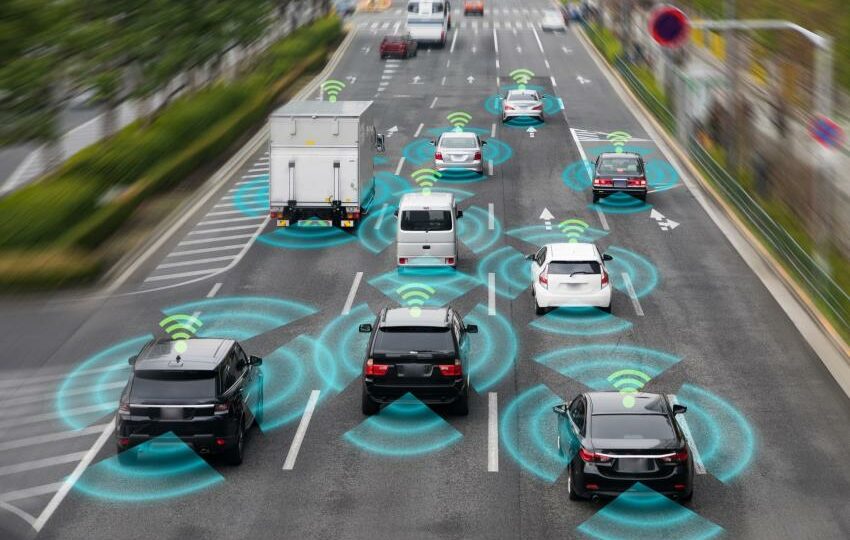Introduction.
Technology has gradually worked its way into all aspects of daily life. Those who can declare they never interact with technology are in the minority.
Nowadays, it doesn’t matter if you’re at the beach, the mall, or even in the car; you can always reach your loved ones and coworkers. Listed below are some of the ways technology is assisting in reducing road accidents.
1. Blue Tooth/Voice Control
This isn’t cutting-edge tech, but it can significantly reduce distracted drivers. More and more automobile accidents are being attributed to drivers being distracted by their phones, so it’s no surprise that many new applications are aimed at keeping people safe on the road.
There are legitimate reasons why several jurisdictions have made it unlawful to use a handheld phone while behind the wheel. Automatic smartphone pairing with Bluetooth-enabled vehicles allows drivers to answer incoming calls hands-free by simply speaking into the phone.
You can also use voice commands to get turn-by-turn directions. Some voice control options allow you to alter the tune, adjust the temperature, and numerous other settings.
2. Anti-reckless Teen Driving Tech
The temptations for dangerous driving among teenagers persist even if you succeed in keeping your kid from using their phone while driving. Some people want to drive dangerously, and others drive too fast. Some do this to get where they need to go, and others do it for fun.
There are now tools available to help young drivers slow down and think before they take risks. GPS-enabled phone add-ons will notify a parent if their adolescent is driving recklessly or too quickly. Visit the website of one of a motor vehicle safety technology company to sign up.
3. Interlock Devices
Thousands of preventable deaths on the roads every year may be averted if attention-detection devices were used to check drivers for signs of fatigue or impairment. Devices like an in-car breathalyzer can disable a car if the driver’s BAC exceeds the legal limit of 0.08.
4. Drowsiness Video Sensor
A video drowsiness sensor can be mounted on the dashboard to watch the driver’s face constantly for unmistakable signs of fatigue. The sensor can either pull on the driver’s seatbelt or make a noise to alert them to pull over.
5. Gear Shift Palm Detection
A sensor in the gear shift palm can prevent the vehicle from moving out of the park if it detects even a small amount of alcohol in the driver’s system. To avoid drunk driving, the car’s navigation system will sound an alarm if it detects any traces of alcohol. Several motor dealerships, including Nissan, currently provide this feature.
6. Phone Suppression Technology
Zoom Safer is one of many new apps that encourages drivers to focus on the road rather than their phones. The headset is equipped with Zoom Safer filters incoming calls and texts.
The system will prevent incoming texts while driving and let anyone trying to text you know that you cannot respond safely. The speaker system will notify the driver of incoming calls without requiring them to check the device.
7. AEB: Automatic Emergency Braking Systems
There are two types of brake aid technology: AEB or automatic emergency braking systems.
These innovations were developed to decrease the number of people hurt in rear-end collisions. One-third to one-half of all reported car accidents each year are rear-ended collisions.
An Imminent Crash Braking identifies when an anticipated crash with some other vehicle is likely to happen sooner and will slow or stop the car even if the driver has not done anything. Dynamic Brake Support will engage when the driver applies the brakes, but it won’t work hard enough to prevent a collision.
8. Backup Camera
The purpose of backup cameras often called rearview video systems, is to help drivers avoid collisions when reversing. This type of collision will generally involve a cyclist or pedestrian getting struck by a car driving out of a driveway or parking area.
When the gearbox is put into reverse, the camera automatically switches on, giving the driver a clear view of what is behind the car. The success of this system in reducing car accidents has led to its required installation in all vehicles produced from May 2018.
9. Blind Spot Detection
When changing lanes, using blind spot detection can help a motorist make sure no vehicles are hiding in that area. Some implementations of this tech provide continuous feedback on the driver’s blind spot, while others only do so when the turn signal is activated.
10. Lane Departure Warnings
This innovative safety mechanism uses cameras to monitor the car’s location relative to the lanes. A warning will flash on the screen if the vehicle begins to veer off course without the driver signaling a turn.
This is an excellent method for refocusing a driver’s attention who has become sidetracked. Sideswipe accidents can be avoided with the use of this cautionary signal as well. Some implementations of this tech even let the driver sit back and relax while they keep the car safely in its lane.
11. Forward Collision System
Many people cause rear-end collisions because their attention is diverted elsewhere, usually to their phone or the side of the road. FCS, or Forward Collision Systems, is a saving grace for this case.
By automatically gauging the distance between itself and the vehicle in front of it, a car equipped with this technology can reduce its speed to lessen the severity of any potential collisions.
12. Adaptive Headlights
Adaptive headlights are a cutting-edge innovation already saving lives by reducing collisions on the road. When the driver turns the wheel, the lights automatically illuminate.
What exactly is this doing to assist keep people safe? Let’s say you’re driving down a dark road and bend, only to have a deer dart out in front of your car or another car suddenly appear. Adjustable headlights provide a clear view of the road ahead.
13. Electronic Stability Control
For “Electronic Stability Control,” ECS is a technological breakthrough that prevents vehicles from skidding out of control, even in slightly hazardous weather.
In a run-off-road accident, this system will automatically apply the brakes to the wheels, limiting the engine power. The effectiveness of ECS has been demonstrated through its ability to prevent almost half of all rollovers and car accidents.
Conclusion
Technology developed to improve safety may lead to an accident when systems fail to work as planned. Even the most cutting-edge car might be involved in an accident; therefore, safety should always be a top priority.
With the rate at which our culture evolves, it should be no surprise that new forms of technology influence people’s day-to-day lives. More and more technologies are being made to address humans’ prevalent difficulties.








